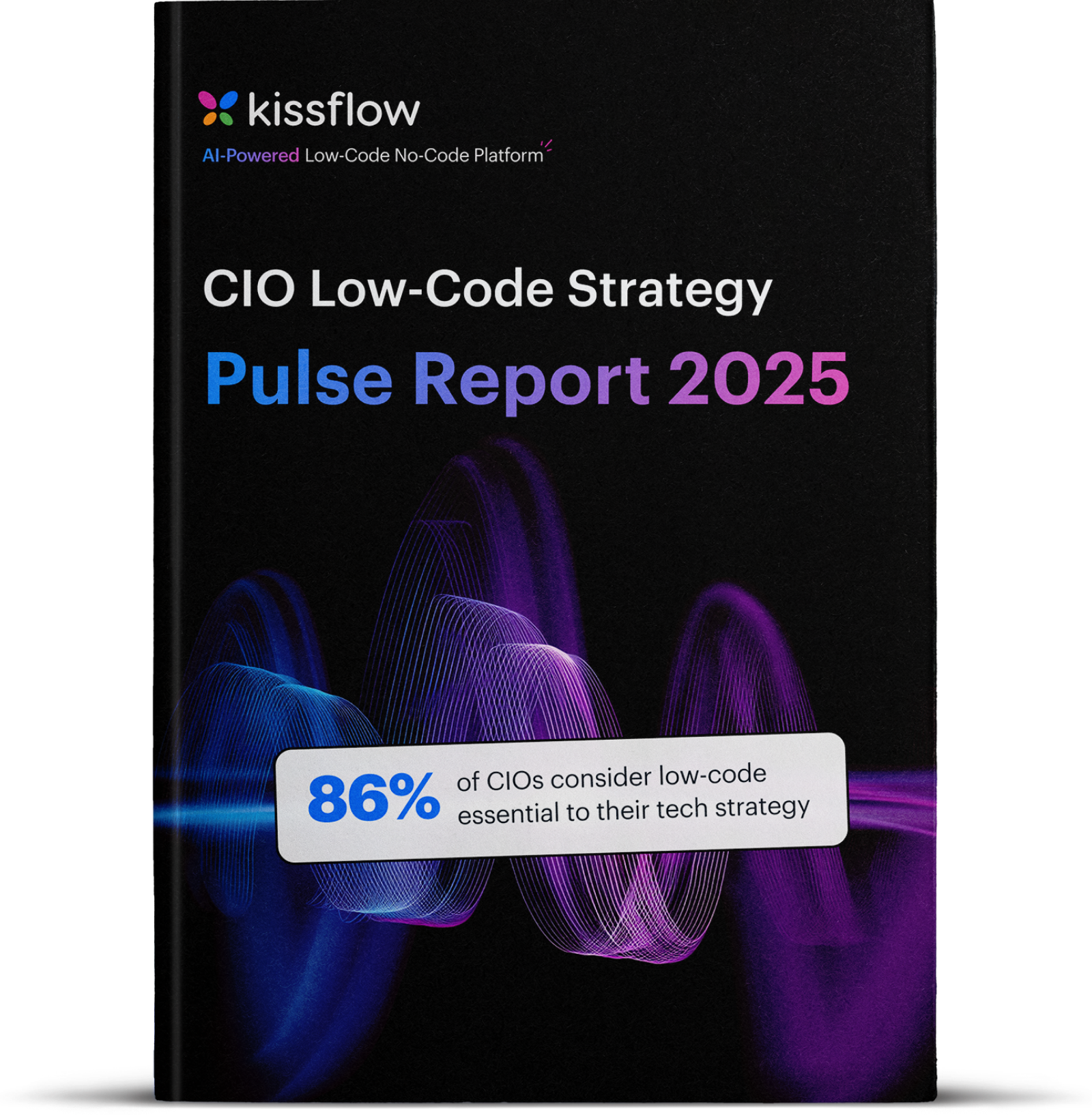
What Is Enterprise Application Development?
Enterprise application development is the process of building and deploying applications customized to complex business requirements. Working with an enterprise web application development company ensures these applications are scalable and effectively meet business needs.
Custom enterprise software development integrates computer systems that run an enterprise's operations to facilitate coordination across the organization. These applications enhance business operations by automating workflows or modernizing legacy systems, empowering users to complete tasks more efficiently. Agility, speed, and scalability are crucial in enterprise application development.
Traditional vs Modern
Enterprise Application Development
Traditional App Development
- Slow app development:Apps take substantial time to build.
- OS dependent: There's a dependency between the operating system and the application, making migration and scalability complex.
- Slow release pace for app updates: Considerable time is spent identifying problem sources before developing solutions.
- Organizational structure takes priority:Developers hand application code to operations teams for production before release, causing delays.
- Costly: Development teams must set up data storage and other unnecessary services.
- Not secure: Development across the entire lifecycle is hosted on the organization's server.
Modern App Development
- Fast app development: Developers conform to frameworks designed to maximize flexibility.
- OS independent: Developers use platforms to eliminate dependencies, making migration and scalability straightforward.
- Faster release pace for app updates: Companies respond to user needs quickly, increasing user retention.
- Swift and smooth transition:The development process takes a holistic approach, combining people, processes, and tools.
- Cost-effective: Organizations only pay for tools they actually use.
- Very secure: Data is secure in the cloud, accessible globally, and user-friendly.
Types of enterprise applications you can build

Asset management apps
An asset management application records and tracks assets throughout their lifecycle, from procurement to disposal. Organizations know where specific assets are located, their details, who is using them, and how they're being utilized.

HRMS apps
These applications store employee information and support various HR functions, including recruiting, training, benefits, and payroll. They enhance human resource management through automation, collaboration, and data analysis.

Procurement apps
These apps give companies complete control over every purchase. They consolidate information on purchasing requirements, supplier availability, and purchase order status, creating a unified system that links purchasing activities across departments. The apps foster visibility and transparency in procurement.

Customer support apps
Support agents use these apps to help customers. They easily provide answers to questions, help customers troubleshoot technology, give instructions on product usage, and resolve issues efficiently.

Sales apps
Sales representatives use these applications to market new products and services and to make customers aware of available discounts and offers. These digital applications help businesses streamline, optimize, and accelerate sales processes, providing sales teams with tools and features that help them achieve their targets.

Asset management apps
An asset management application records and tracks assets throughout their lifecycle, from procurement to disposal. Organizations know where specific assets are located, their details, who is using them, and how they're being utilized.

HRMS apps
These applications store employee information and support various HR functions, including recruiting, training, benefits, and payroll. They enhance human resource management through automation, collaboration, and data analysis.

Procurement apps
These apps give companies complete control over every purchase. They consolidate information on purchasing requirements, supplier availability, and purchase order status, creating a unified system that links purchasing activities across departments. The apps foster visibility and transparency in procurement.

Customer support apps
Support agents use these apps to help customers. They easily provide answers to questions, help customers troubleshoot technology, give instructions on product usage, and resolve issues efficiently.

Sales apps
Sales representatives use these applications to market new products and services and to make customers aware of available discounts and offers. These digital applications help businesses streamline, optimize, and accelerate sales processes, providing sales teams with tools and features that help them achieve their targets.
Enterprise app development barriers
Legacy systems prevent organizations from adapting to changing business environments. They're difficult to modify and maintain, and often incompatible with new technologies or business processes. Over time, they consume more resources without improving performance, resulting in high costs and increasing technical debt.
When business strategies and IT strategies aren't aligned, achieving business objectives becomes challenging. Solutions intended to help quickly become burdensome. Business users may resort to risky shadow IT, building applications that fall short of requirements. Aligning business with IT improves productivity and enables teams to develop better applications.
Software developers are in high demand but short supply. Those employed in organizations often lack opportunities to challenge themselves or enhance their skills, spending most of their time maintaining legacy systems, building common applications, and fixing code issues. As enterprises push hard for digital transformation, many developers burn out and quit.
Features Every Enterprise Application Development Should Have

Security
Custom application software development companies build applications using sensitive customer and company data that needs protection. To ensure data security, an enterprise application development tool should have advanced threat detection, secure firewalls, multi-factor authentication, reliable password policies, secure data centers, backup and disaster recovery features, HTTPS encryption, and IP login restrictions. Data breaches damage businesses, so choose a platform with a security-first approach.

Scalability
Enterprise application development tools must scale according to business requirements for continued benefit. Your chosen platform should accommodate exponential increases in data, workload, work modules, and simultaneous users. A development tool supporting massive data streams, including IoT data, better supports business growth.

Integration
A quality app development platform must integrate with other business systems to improve processes, enhance efficiency, and control costs. It should function as a centralized data hub for information and synchronize data in real time. The platform should comprise modules that interconnect data across all departments, allowing users to automate repetitive processes. It should also support cross-departmental data sharing and help leaders make data-driven decisions.

Reporting & Analytics
Analytics and reporting features empower decision-makers to analyze process efficiencies and make informed decisions. They can use data to gain valuable insights into user behavior and adapt to market trends. Data can also drive business development and growth strategies.

Cloud Access
With most companies now utilizing cloud technology, enterprise software development in cloud environments is essential for application development tools. Software with cloud access allows users to log in from multiple locations, working whenever most convenient. The platform should also incorporate user access controls that restrict data access for certain users or groups.

Security
Custom application software development companies build applications using sensitive customer and company data that needs protection. To ensure data security, an enterprise application development tool should have advanced threat detection, secure firewalls, multi-factor authentication, reliable password policies, secure data centers, backup and disaster recovery features, HTTPS encryption, and IP login restrictions. Data breaches damage businesses, so choose a platform with a security-first approach.

Scalability
Enterprise application development tools must scale according to business requirements for continued benefit. Your chosen platform should accommodate exponential increases in data, workload, work modules, and simultaneous users. A development tool supporting massive data streams, including IoT data, better supports business growth.

Integration
A quality app development platform must integrate with other business systems to improve processes, enhance efficiency, and control costs. It should function as a centralized data hub for information and synchronize data in real time. The platform should comprise modules that interconnect data across all departments, allowing users to automate repetitive processes. It should also support cross-departmental data sharing and help leaders make data-driven decisions.

Reporting & Analytics
Analytics and reporting features empower decision-makers to analyze process efficiencies and make informed decisions. They can use data to gain valuable insights into user behavior and adapt to market trends. Data can also drive business development and growth strategies.

Cloud Access
With most companies now utilizing cloud technology, enterprise software development in cloud environments is essential for application development tools. Software with cloud access allows users to log in from multiple locations, working whenever most convenient. The platform should also incorporate user access controls that restrict data access for certain users or groups.
How Kissflow can help you leverage enterprise application development
Build scalable apps
Growing businesses need scalable operations. With scalable enterprise applications, resources and capacity adjust based on demand. Kissflow low-code allows users to immediately adapt to changes in size and usage needs, offering responsiveness that traditional software cannot match.
Optimize your business processes
Driving growth requires process optimization. Kissflow low-code enables users to optimize business processes and streamline operations. Enterprise application management results in market compliance, optimized operations, effective resource utilization, reduced risks, higher-quality products, and end-to-end visibility.
Increase productivity
Collaborate better, increase throughput, and streamline processes. With Kissflow, employees can coordinate tasks and projects more effectively. Additionally, businesses can use the platform's reports and analytics to analyze and capitalize on opportunities faster than competitors.
Automate workflows
Enterprise applications that automate workflows enhance process efficiency. Kissflow low-code collects vital data about organizational processes, identifying which should be automated. You can easily automate processes based on time and effort consumption, reducing time spent on repetitive tasks and allowing employees to focus on high-value work.
Stantardize processes
Standardized processes form the backbone of organizational performance. You can easily track and measure performance, utilize available resources, and maximize revenue. Standardization allows employees to execute high-quality work efficiently while providing a scalable infrastructure for future growth.








